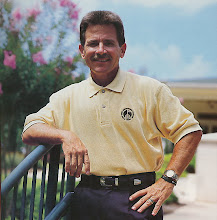The labor line item of any golf course operation budget can comprise 50 to 70 % of the total operating budget depending on maintenance standards and playing conditions expected by the golfers and employers. With this in mind, I want to share 3 or 4 ways that our operation has invested in equipment and technology that has resulting in labor savings. This in turn has given us ability to help maintain a responsible annual operating budget. Cumulatively, these new pieces of equipment, save tens of thousands of dollars in efficient man hours, help provide better playing conditions and give us the ability to work more productively and stay out in front of play.
The Dakota trailer below has the ability to dump to the back and to the sides. This trailer has the capacity to hold 4 to 5 times the smaller trailers that we have previously used on the course. Not only will this trailer help free up labor to accomplish other detailed tasks. This unit also has a heavier load rating to safely transport materials whereas our smaller trailers can only haul limited loads without damaging the frame of the trailers. Two men can be assigned to this unit.
Below are the smaller trailers which we have used for years. We have had 8 to 10 employees in the past hauling materials all across the property. This resulted in excessive man hours. Now several employees will take the place of 6 to 8 employees for tasks involving the use of this unit. This will free the other 4 or 5 staff members to give attention to other needy tasks.
Years ago, when we instituted the 84 inch rough intermediate mowing cut, we had two men and two mowers that mowed theses areas twice a week. That was labor for two men, fuel for two mowers, and the cost of two mowers at $20,000 each.
One of our new investments is a machine (below) that mows the same width as the two mowers above. The benefits - less man hours of labor, less fuel and 1 less mower at a cost of $20,000
Previous shoveling of the aerification plug
Our new aerifyer plug collection attachment
Previously we had a high number of employees assigned to fill in he aerificaition holes following the sand topdressing with hand brushes
Our new blowers allow us to use less staff to fill the aerification holes more effectively with less employees





























































